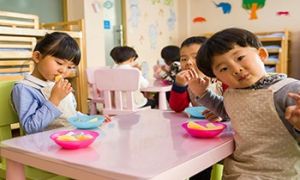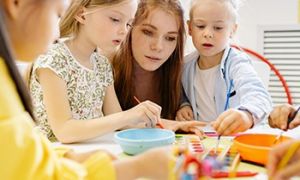Here are 20 Collaborative Art Projects for Preschoolers that encourage teamwork, creativity, and fun and the Benefits Of Collaborative Art
20 Collaborative Art Projects for Preschoolers
1. Group Mural Painting
- Provide a large canvas or butcher paper for children to paint together.
2. Handprint Collage
- Each child adds their handprint to create a colorful masterpiece.
3. Nature Collage
- Collect leaves, flowers, and twigs to make a collaborative, nature-inspired artwork.
4. Puzzle Piece Art
- Decorate individual puzzle pieces and assemble them into a group design.
5. Tissue Paper Mosaic
- Tear and glue tissue paper onto a large surface to create a vibrant mosaic.
6. Group Finger Painting
- Let children explore textures and colors by finger-painting together.
7. Collaborative Chalk Drawing
- Use sidewalk chalk to create a large outdoor mural.
8. Recycled Art Sculpture
- Build a sculpture using recycled materials like cardboard and bottle caps.
9. Storytelling Art
- Illustrate a group story with drawings and paintings.
10. Bubble Wrap Printing
- Dip bubble wrap in paint and press onto paper for a textured effect.
11. Group Weaving Project
- Use yarn or fabric strips to create a collaborative weaving piece.
12. Paper Chain Decorations
- Decorate and link paper strips to form a long chain.
13. Collaborative Collage
- Each child contributes a drawing or painting to a shared collage.
14. Group Clay Sculpture
- Work together to mold and shape a clay sculpture.
15. Painted Rock Garden
- Decorate rocks and arrange them into a group display.
16. Watercolor Resist Art
- Use crayons and watercolors to create a layered group artwork.
17. Group Printmaking
- Experiment with stamping and printing techniques on a shared canvas.
18. Shadow Tracing Art
- Trace shadows of objects or people and decorate them.
19. Collaborative Dot Painting
- Inspired by Aboriginal art, children create dot patterns together.
20. Group Paper Quilt
- Each child decorates a square, then combines them into a quilt-like display.
Benefits Of Collaborative Art
Collaborative art offers numerous benefits, fostering creativity, teamwork, and personal growth. Here are some key advantages:
1. Encourages Creativity & Innovation
-
Working with others introduces fresh perspectives and ideas.
-
Artists can experiment with new techniques and styles.
2. Builds Social & Communication Skills
-
Encourages teamwork and cooperation.
-
Helps artists learn to express their ideas and listen to others.
3. Strengthens Problem-Solving Abilities
-
Artists work together to overcome creative challenges.
-
Encourages adaptability and flexibility in artistic approaches.
4. Expands Artistic Knowledge
-
Exposure to different artistic styles and methods.
-
Learning from peers enhances individual skills.
5. Creates a Sense of Community
-
Strengthens connections between artists and audiences.
-
Fosters collaboration beyond art, building friendships and networks.
6. Boosts Confidence & Motivation
-
Encouragement from peers helps artists feel valued.
-
Shared success increases motivation to create more.
7. Enhances Emotional Well-being
-
Art can be therapeutic, and working with others adds emotional support.
-
Reduces stress and promotes a positive mindset.
Further Reading
Linking Art To The EYLF Learning Outcomes
Benefits Of Art and Craft
Process Art Vs Product Art In Early Childhood
Art and Craft Descriptions With Links To The EYLF
Importance of Displaying Children's Artwork
50 Process Art Activities
Incorporating Famous Artists Into Children's Art Experiences


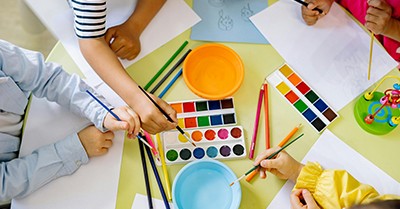
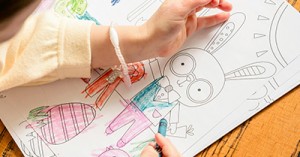

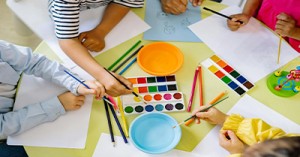
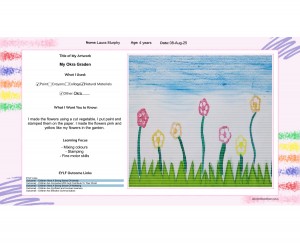
 As an Educator in Australia, your pay rate falls under the Children’s Services Award 2010. This award states the minimum amount that an employer can
As an Educator in Australia, your pay rate falls under the Children’s Services Award 2010. This award states the minimum amount that an employer can When working as a qualified Early Childhood Teacher (with a university degree) within a service, your rate of pay will come from the Educational Services
When working as a qualified Early Childhood Teacher (with a university degree) within a service, your rate of pay will come from the Educational Services When working as a Diploma Qualified Educator your pay rate is from the Children's Services Award 2010. This Award states your minimum rate of pay
When working as a Diploma Qualified Educator your pay rate is from the Children's Services Award 2010. This Award states your minimum rate of pay When working as a Cert 3 Qualified Educator, your pay rate is from the Children's Services Award 2010. This Award states your minimum rate of
When working as a Cert 3 Qualified Educator, your pay rate is from the Children's Services Award 2010. This Award states your minimum rate of Educational Leaders play a crucial role in their early childhood service by ensuring that the educational program aligns with best practices and supports the holistic
Educational Leaders play a crucial role in their early childhood service by ensuring that the educational program aligns with best practices and supports the holistic In early childhood education and care, ratios are more than a technicality—they are a frontline safeguard. Every child deserves responsive supervision, emotional connection, and developmental
In early childhood education and care, ratios are more than a technicality—they are a frontline safeguard. Every child deserves responsive supervision, emotional connection, and developmental With the new national child safety reforms kicking in on 1 September 2025, early childhood services like yours have a real opportunity to lead the
With the new national child safety reforms kicking in on 1 September 2025, early childhood services like yours have a real opportunity to lead the Here’s a comprehensive Mobile Phone and Smart Watch Policy tailored for early childhood education and care (ECEC) services in Australia, aligned with the latest 2025
Here’s a comprehensive Mobile Phone and Smart Watch Policy tailored for early childhood education and care (ECEC) services in Australia, aligned with the latest 2025 The Sea of Fish Challenge is a national initiative that invites children, educators, families, and communities to create and display fish artworks as a symbol
The Sea of Fish Challenge is a national initiative that invites children, educators, families, and communities to create and display fish artworks as a symbol Across the early childhood education and care sector, educators are sounding the alarm: current staffing ratios are insufficient to deliver safe, meaningful, and developmentally appropriate
Across the early childhood education and care sector, educators are sounding the alarm: current staffing ratios are insufficient to deliver safe, meaningful, and developmentally appropriate